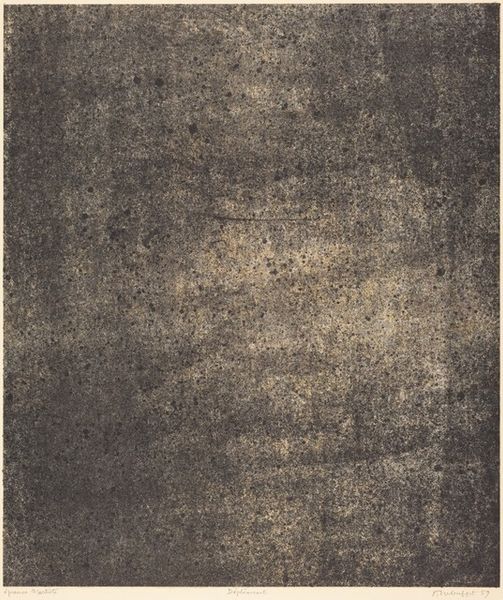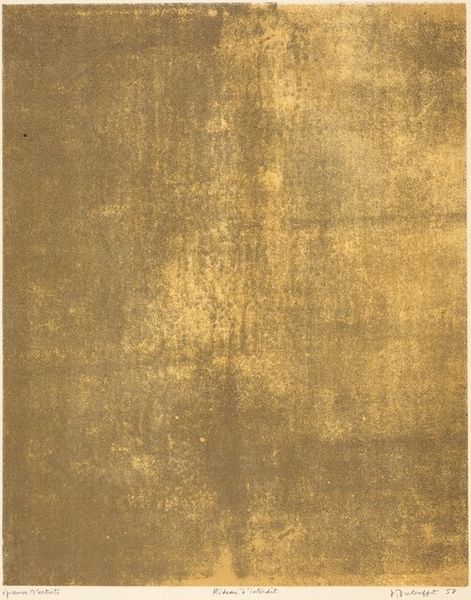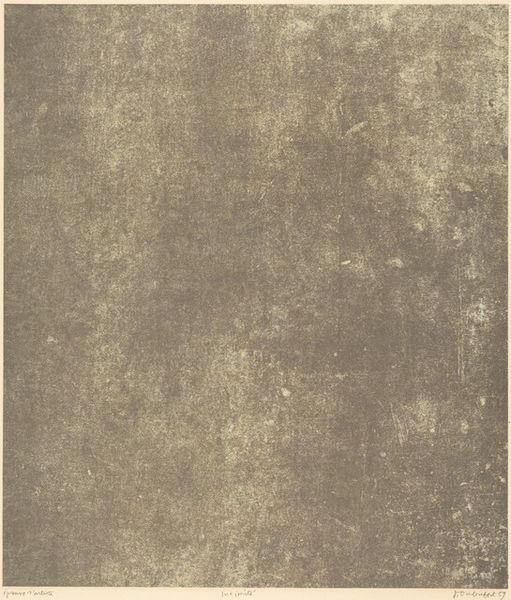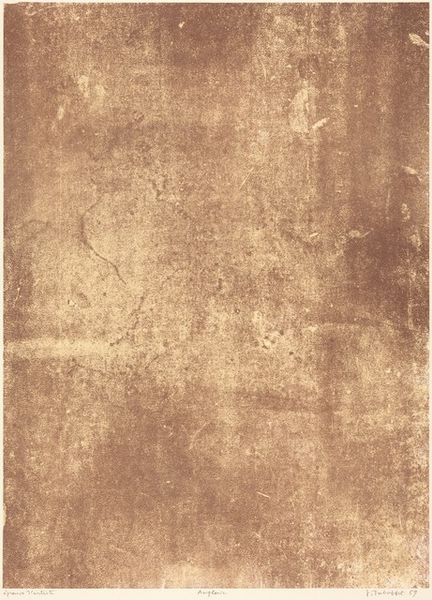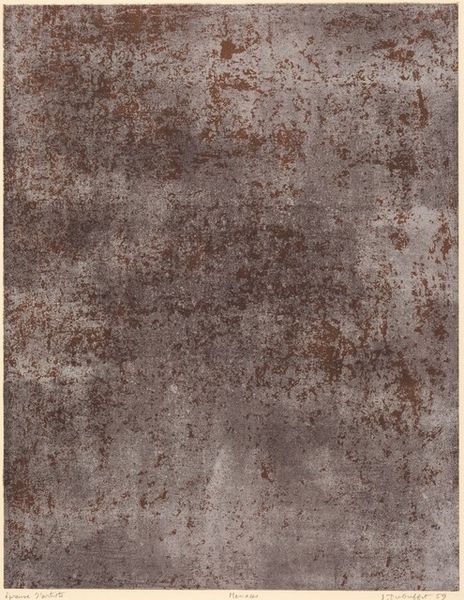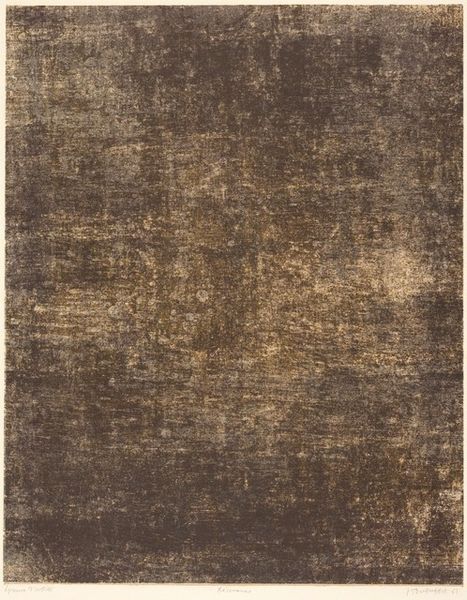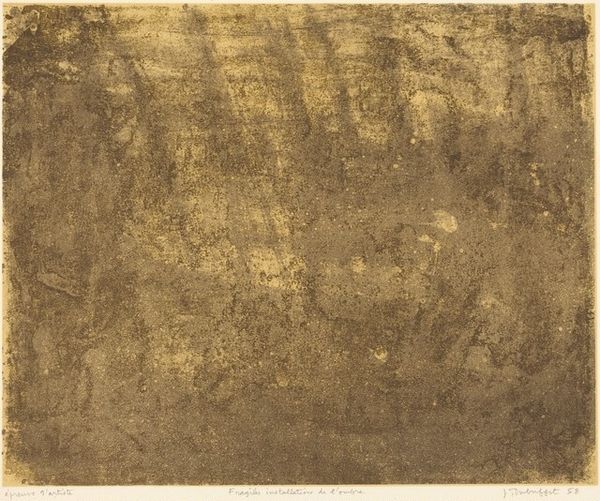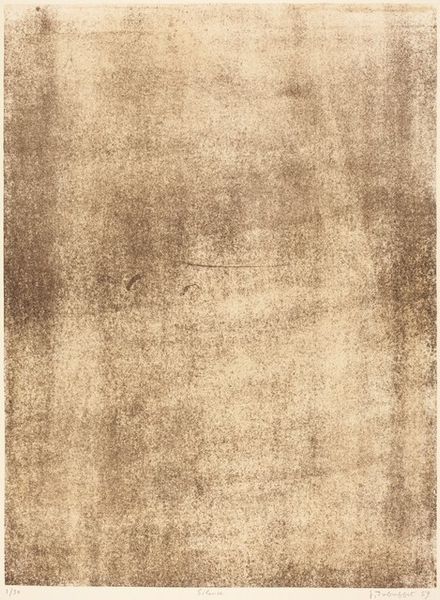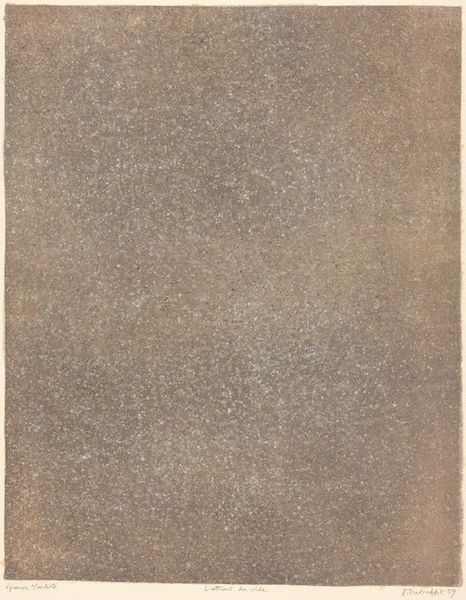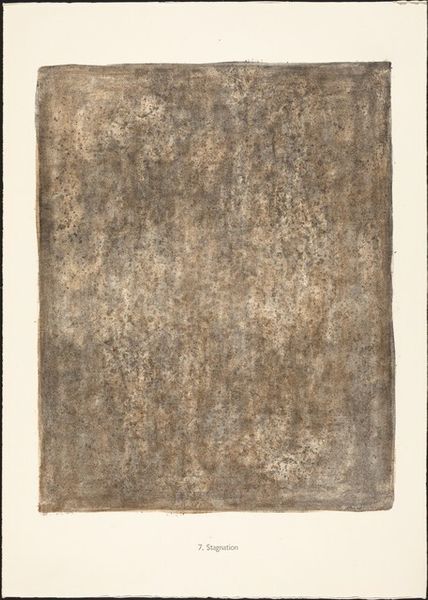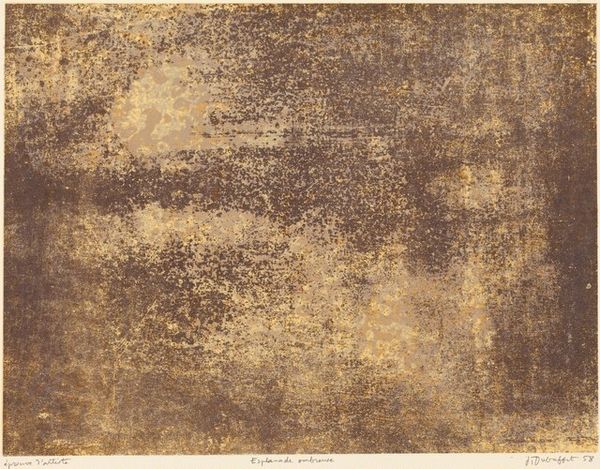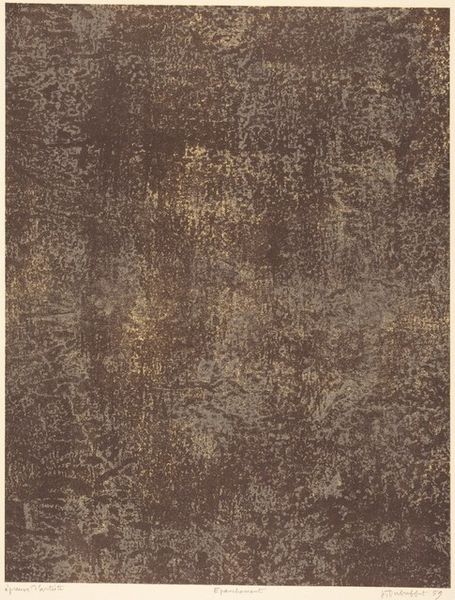
matter-painting, print
#
matter-painting
# print
#
art-informel
#
abstraction
#
monochrome
Copyright: National Gallery of Art: CC0 1.0
Curator: Standing before us is Jean Dubuffet's "Aire Vacant" from 1958. This is a matter-painting print, placing it squarely within the Art Informel movement. Editor: It strikes me as something elemental, like raw earth or aged metal. The texture dominates, and there is a certain desolation about this monochrome plane. Curator: Absolutely, and consider Dubuffet's process; he incorporated non-traditional materials such as asphalt, gravel, and sand into his artworks. These techniques challenge notions of traditional high art materials by forcing us to look at labor and materiality in an unsentimental light. How is value assigned to 'fine' materials versus things we walk upon in the street? Editor: It evokes the marginalized and often ignored. It is worth noting how Dubuffet was working in the aftermath of World War II, which saw society and culture grappling with disillusionment, displacement, and an urgent sense of questioning established norms. This ties directly to Dubuffet's interests and his radical inclusion of what society deemed ugly, and thus disposable. Curator: And through a technical understanding of printmaking, his innovative methods challenged conventional material boundaries within the medium itself. We see this pushing back against the smooth surfaces favored by commercial printing; here, surface irregularities become content. Editor: That texture is indeed powerful. Thinking about the title, "Aire Vacant"—vacant space, empty air—the textured surface contradicts that emptiness. Perhaps he's alluding to a space of nothingness filled with material traces of existence. Is emptiness even possible when our environment is already teeming with social and material forces? Curator: Precisely, it becomes less about aesthetic pleasure and more about an investigation into what constitutes art. In this way, it dismantles hierarchies, questioning the viewer's assumptions about material value, beauty, and accessibility in artistic creation. Editor: Thinking of post-war disillusionment, “Aire Vacant” is ultimately hopeful for recognizing that creation is still possible, even starting from discarded matter. The monochromatic field doesn't present finality, but an opportunity. Curator: Right, he presents to the viewer a sort of liberation through materiality, to reconsider what is present and its intrinsic artistic possibility. Editor: It’s interesting to view it this way, highlighting the quiet resistance of material transformation to existing societal norms.
Comments
No comments
Be the first to comment and join the conversation on the ultimate creative platform.
